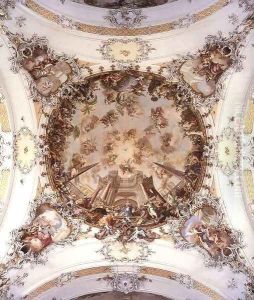Jakob Johann Zeiller Paintings
Jakob Johann Zeiller was an Austrian painter born in Reutte, Tyrol, in 1708. He is primarily known for his contributions to fresco painting in the Baroque style, which were prominent in Southern Germany and Austria during the 18th century. Zeiller's early life and education in the arts were deeply influenced by the cultural environment of Tyrol and the broader artistic movements sweeping through Europe at the time. He initially trained under his father, who was also an artist, before furthering his studies in Italy, a common practice among aspiring artists of his era. Italy, with its rich artistic heritage and the presence of numerous masterpieces from the Renaissance and Baroque periods, played a crucial role in shaping Zeiller's artistic vision and technique.
After completing his studies in Italy, Zeiller returned to the German-speaking regions, where he embarked on a successful career as a fresco painter. His work was characterized by dynamic compositions, a vivid color palette, and the ability to imbue religious and mythological scenes with a sense of immediacy and emotional depth. Zeiller's frescoes adorned the walls and ceilings of several churches and palaces, contributing to the splendor of Baroque interior design that was prevalent among the ecclesiastical and secular elites of his time.
Throughout his career, Zeiller collaborated with other artists and craftsmen, which was typical of the period, as large-scale fresco projects often required the efforts of multiple individuals with various skills. Despite the collaborative nature of his work, Zeiller's distinctive style and artistic vision were evident in the projects he undertook. His contributions to the art of fresco painting were not only celebrated in his lifetime but also left a lasting legacy that influenced subsequent generations of artists in the region.
Jakob Johann Zeiller died in 1783 in Reutte, the town of his birth, leaving behind a body of work that continues to be admired for its artistic merit and historical significance. His frescoes remain an integral part of the cultural heritage of Austria and Southern Germany, reflecting the vibrancy and depth of Baroque art. Zeiller's life and work exemplify the dedication and creativity of 18th-century artists who contributed to the rich tapestry of European art history.
